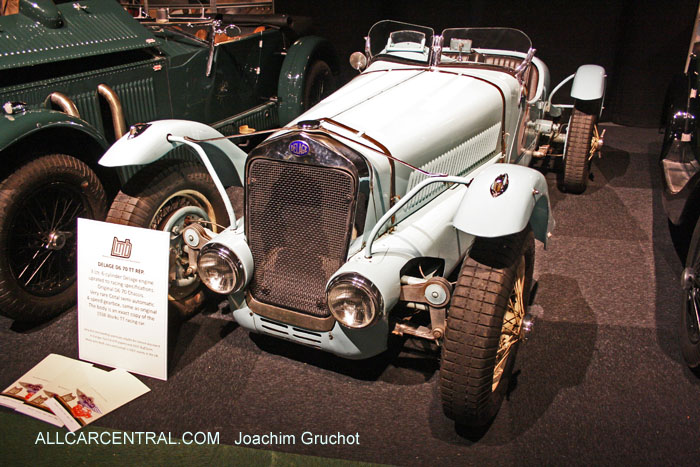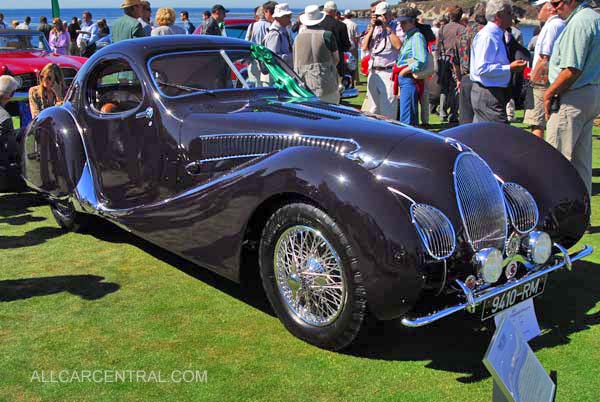Essen Techno Classica 2013 Car Show Prologue
Essen Techno Classica 2013 Car Show Prologue Photos and Stories.
World's largest fair of automobile passion, April 10th to 14th 2013
Photos and story provided by Joachim Gruchot Contact Photographer for Information.
GALLERY 1
Prologue
Essen Techno Classica 2013 Car Show Prologue
The show will include, with performance of the industry and highlights of dealer's offering, highlights of the classic world show, presented in the Palais de l'Automobile, centrally located in hall 6
Porsche Classic will take this opportunity to present four 911 models to illustrate the broad scope of the 911's history. Included rare fully restored 356 B T5 GS Carrera GT model.
This year's special jubilee exhibition is named "Automobile Masterpieces" celebrating the jubilee "25 Years of TECHNO-CLASSICA" to highlight the high fashion of automobile construction. The high period of body construction which gave the world the most elegant and beautiful designer creations. These unique masterpieces for display were designed by the crème de la crème of coachbuilders of the 1930's to 1940's.
Many early cars were individually manufactured to customer preference. Then the body designed and built by skilled artisan coachbuilders.
The luxury manufacturers like Talbot Lago, Bugatti, Delahaye or Maybach were considered top of the line themselves already, however having the coachwork from Saoutchik and Figoni et Falaschi from France or Autenrieth and Erdmann & Rossi from Germany they became pieces of art.

Delage D6 70 TT 1938 Reproduction
3 Ltr. 6 cyl. Delage engine on original D6 70 Chassis.
Body is an exact copy of the 1938 Works TT Racing car.
Interclassics & Topmobiel 2013
The following courtesy of Essen (Techno Classica)
"Delage D6-70 from 1936, bodywork by Figoni; one of the most beautiful cars which won in Le Mans. Delahaye had taken over the company from Louis Delage in 1935 and wanted to boost up the image with success in motor sports. This car, whose three-litre six-cylinder engine had approx. 100 HP, was built in 1936 especially for Le Mans. Joseph Figoni had equipped the lightweight, closed racing body with almost detached mud wings. The race in 1936 was cancelled due to a general strike and the Delage was presented at different Concours d'Elegance. Im folgenden Jahr konnte das The coupé could prove its racing ability in the following year: Louis Gerard and Jacques de Valence were winners of the category and ranked 4th in the overall category.

Talbot-Lago T150-SS Figoni et Falaschi 1938
Pebble Beach Concours d'Elegance
Pebble Beach, California, 2008
Talbot Lago T 150 C Teardrop Coupé with bodywork by Figoni et Falaschi from the year 1938 - this amazing coupé is a highlight of the French streamline design. The Paris coachbuilders Joseph Figoni and Ovidio Falaschi built approx. 16 exemplars of these so-called "goutted'eau" coupés (teardrop). The car on exhibit was the only one with a long wheelbase. It is not only ravishingly beautiful, but also fast: in 1948 it was the category winner of the 24-hour race of Spa.
Bugatti 57 C with Gangloff car body from 1939 - the stretched roadster with the disguised rear wheels was deemed to be a creation from Saoutchik for many years, until the history could be researched: the first owner liked the design of the coachbuilders from Paris, however, he found it too expensive so that he assigned Gangloff in Colmar with the order. In 2010, the elegant automobile was the winner of the Concours at the 2nd Schloss Bensberg Classic.

Delahaye 135 MS Chapron Cabriolet 1947
Pebble Beach Concours d'Elegance
Pebble Beach, California, 2009
Delahaye 135 MS Coupé with Pourtout bodywork. This streamlined coupé was presented in 1946 at the Paris Motor Show. The chassis is the same as for the successful Delahaye Le Mans racing car. For the bodywork, the French coachbuilder Pourtout was inspired by pre-war design of its previous employee Georges Paulin, who was killed as a British undercover agent 1940 by the National Socialists. Talbot Lago T26 Grand Sport with Saoutchik car body. Contrary to the designer principle, in this case function follows form for this extraordinary coupé. The well-known Paris coachbuilder Jacques Saoutchik created this piece of art in 1948 - seven years later he had to cease operations.
Historical background:
The German term "Karosserie" (coachwork) comes from the French (carosse = coach). In ancient times already, coachbuilders have dealt with the design of vehicles and their coachwork. From the middle ages, these were called cartwrights or wagon-makers. At the beginning of automobile construction, moneyed customers had bespoke car bodies built on request on top of carriages from the automobile manufacturers. With the transition from the coach shape to the automobile bodywork after the turn of the century, therefore a new trade was established: the trade of the coachbuilders. With the increase of series production, the automobile factories established in-house bodywork departments for their vehicles.
In the 1920es, along with the increasing acceptance of the automobile, the outside appearance became more and more important. In addition to a status symbol, the automobile also turned to a gem for its owner and the car body became a distinctive feature in road traffic. Art and design finally found their way into automobile construction. This was the beginning of the prosperity in bodywork trade and the development towards the body construction industry. Soon afterwards, new artistic reform movements and styles such as Art Deco and New Objectivity influenced the design, just as aerodynamics, which led to the streamline-shaped car bodies of the 1930es.
The car body, separated from the undercarriage, of classic automobile design allowed for a large variety in body construction. The Lancia Lambda from 1922 was the first automobile presented with a self-supporting car body and the Hanomag 2/10 HP ("Kommissbrot") was the first pontoon car body, with the wheelhouses integrated in the bodywork. However, this functional car body design became widely accepted only after World War II. The "Carosseriers" were deprived of the indispensable basis of their work"
Note: The Images on this page will be replaced with images and stories from the actual event. Check back after the above event date.



All Cars • • Racing • • VINTAGE • • Shows • • Gallerys • • Contact
